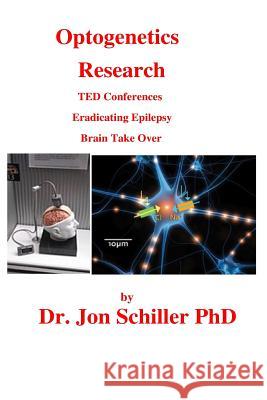Optogenetics Research » książka
Optogenetics Research
ISBN-13: 9781489596307 / Angielski / Miękka / 2013 / 162 str.
Your author became aware of Optogenetics Research when he received a Caltech Associates invitation to attend an evening lecture by Viviana Gradinaru, Professor of Biology at Caltech, on this subject. The description of Optogenetics is given below: Optogenetics is a neuromodulation technique employed in behavioral neuroscience that uses a combination of techniques from optics and genetics to control the activity of individual neurons in living tissue-even within freely-moving animals-and to precisely measure the effects of those manipulations in real-time. It was developed by Karl Deisseroth and his colleagues at Stanford University in 2006. Optogenetics is known for the high spatial and temporal resolutions that it provides, which allow for observation of individual neurons over a time course of milliseconds, but is primarily famous for its ability to precisely alter the activity of specific brain areas without directly affecting a subject's behavior. In 2010 Karl Deisseroth was awarded the inaugural HFSP Nakasone Award "for his pioneering work on the development of optogenetic methods for studying the function of neuronal networks underlying behavior." In 2010, optogenetics was chosen as the Method of the Year across all fields of science and engineering by the interdisciplinary research journal Nature Methods (Primer on Optogenetics, Editorial Commentary). At the same time, optogenetics was highlighted in the article on "Breakthroughs of the Decade" in the scientific research journal Science Breakthrough of the Decade; these journals also referenced recent public-access general-interest video Method of the Year video and textual Scientific American (SciAm) summaries of optogenetics. In 2012 Gero Miesenbock was awarded the InBev-Baillet Latour International Health Prize for "pioneering optogenetic approaches to manipulate neuronal activity and to control animal behavior.""
Zawartość książki może nie spełniać oczekiwań – reklamacje nie obejmują treści, która mogła nie być redakcyjnie ani merytorycznie opracowana.











